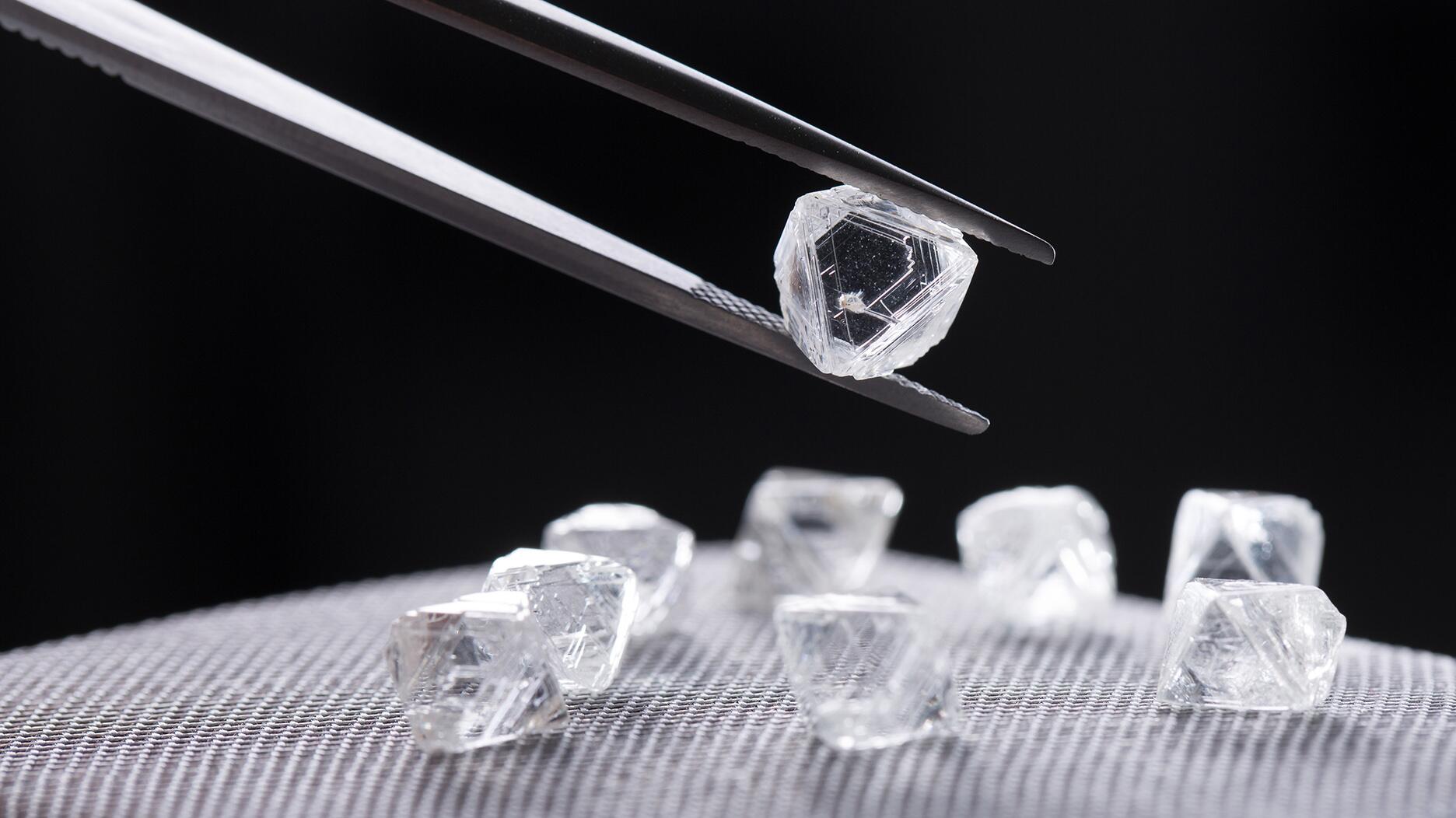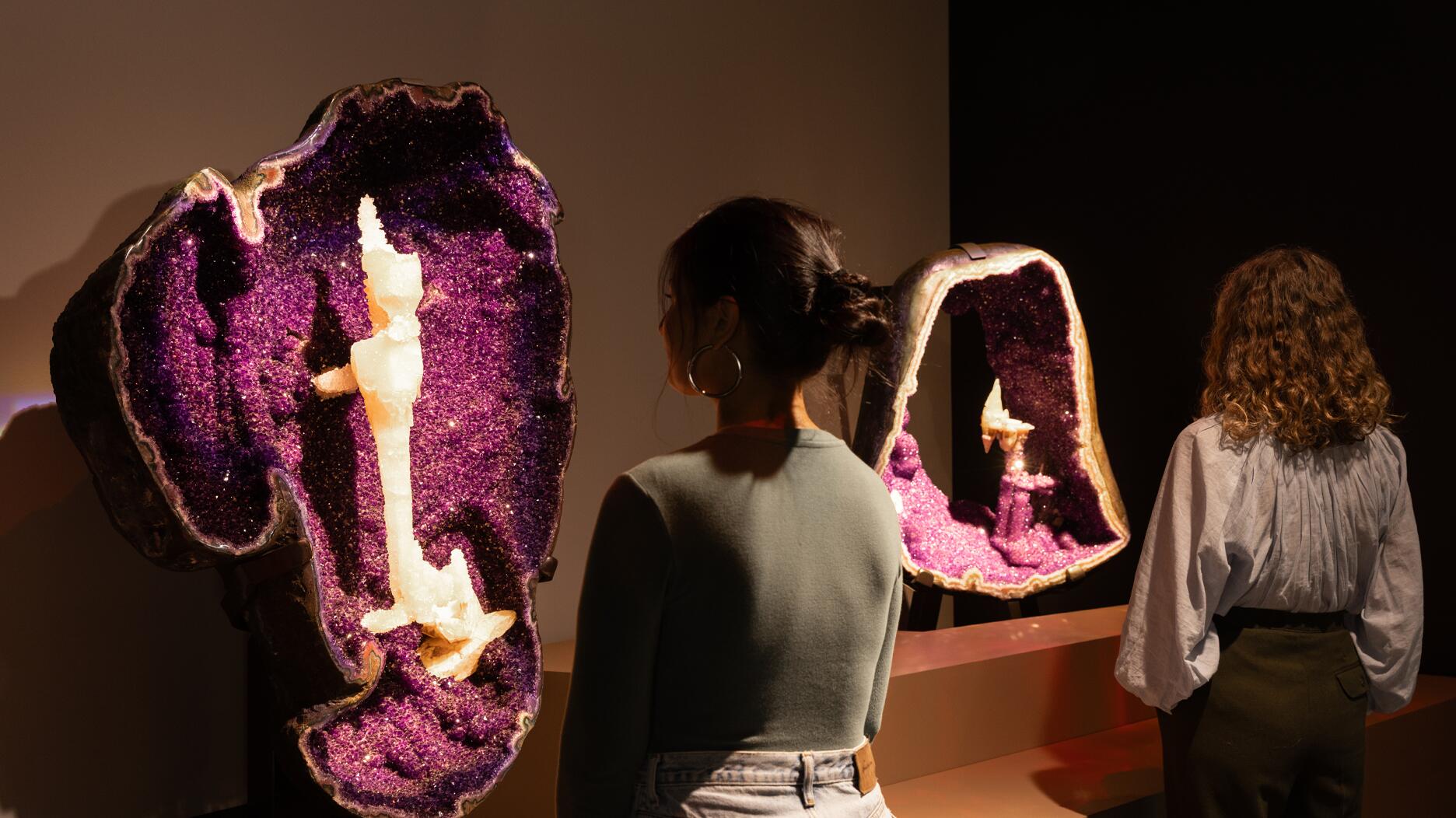This year’s good luck charm features the mythical horse Pegasus, and is our first Piece of the Week of the new year.
Op-Ed: Can the Kimberley Process Get it Right in CAR?
As the KP readies to green-light rough diamond exports from one area of the Central African Republic, the Enough Project’s Brad Brooks-Rubin says yes, the process can succeed there.
Since it launched in 2003, there has been one essential question facing the Kimberley Process (KP): Does it work?

This deceptively simple question elicits very strong and often diametrically opposed views. Many in industry and government believe it an unparalleled success, a bold step unlike that taken for any other commodity in the world. Others claim it to be a disappointment, an institution unable and often even unwilling to deal with the toughest issues, especially when dealing with exporting diamonds from conflict or post-conflict zones.
The KP’s greatest past challenges in addressing conflict-affected and illicitly traded diamonds--Liberia, Cote d’Ivoire, Zimbabwe--can be used to illustrate success or failure depending almost entirely on your starting perspective. Although each case was different and complex in its own way, and space does not permit us to revisit the details of each here, at the height of those crises, stakeholders within the KP held different views about whether, when and how to permit rough diamond exports. They also diverged on what to do when the situations changed.
As the KP prepares to partially ease the nearly three-year-old suspension of rough diamond exports from the Central African Republic (CAR), the KP and broader industry urgently need to rise above past disagreements. Now is the time for constructive and collaborative action in responsibly regulating the diamond trade in this conflict- and corruption-torn country.
The headline is that the KP is set to permit exports from the Berbérati zone, a mining area in the southwestern part of CAR.
This breakthrough follows a carefully negotiated and thoughtful process agreed upon in June 2015, which included multiple levels of review within the KP, the strong engagement of the CAR authorities and a local implementation committee and substantial information and data collection processes. The potential for progress in Berbérati is to the credit of the KP and many local actors and shows the benefit of fully engaged, multi-stakeholder coordination.
But now that exports are expected to resume soon, the KP and broader industry must redouble diligence efforts and be willing to adjust, rather than see this as a time to ease
Vigilance is required because of situation on the ground. Although only mining areas in and around the town of Berbérati are officially approved, it’s possible for diamonds from other, non-approved mining areas to be brought to the approved areas and then move out for export without any direct means of assurance.
There are few, if any, mining officials or law enforcement regularly deployed to the mining areas, and some of the mines in the Berbérati zone are up to 30 miles away from town, through thick forest. Baseline production data for the Berbérati zone has not been officially established yet, which is critical for the creation of a production footprint or statistical tools that can evaluate whether these leakages are occurring. In sum, the danger of the wrong diamonds getting into the system is very real.
Beyond this general concern of traceability, which is frankly true of many KP-producing countries, armed gangs remain in the area. Though less numerous than in other parts of CAR, it is difficult for KP teams and other observers to get access to the mines themselves, due to logistical challenges and limited financial support. As such, the KP and industry should be prepared to react decisively should credible reports emerge that diamonds formally exported from Berbérati are either (a) not from that region or (b) connected to conflict. If there are such reports, the KP must be prepared to pause and adapt the system to ensure that only conflict-free diamonds are exported.
Responding to these situations will require vigilance, flexibility and commitment to the existing processes.
An effective KP regime in CAR includes the following key measures.
--In CAR, the government’s KP authorities and the broader mechanisms established by the KP need to take all possible steps to ensure that only diamonds from the approved zone are actually exported. Illicit actors should be pursued and excluded from trade and prosecuted. This will require substantial capacity-building of local civil society and community actors, something that the KP’s participants and observers, as well as broader industry, should be prepared to support financially.
--In the key trading and manufacturing centers for CAR production, specifically Antwerp, Dubai, Tel Aviv and Mumbai, KP authorities should be communicating to industry actors about the need to demonstrate meaningful due diligence to ensure that diamonds from outside Berbérati are not mixed with approved production. Illicit diamond trade from CAR may also connect to concerns such as money laundering, areas the KP and industry must do more to address. As such, the World Diamond Council and other industry bodies should inform the trade about the KP’s steps and ensure necessary vigilance. Where authorities discover violations or suspicious activity, action should be taken and reported publicly.
--The KP should not add additional export zones until sufficient time has passed, e.g., in time for the 2016 KP Plenary in November, to evaluate whether this system is workable. This should include public and transparent reporting by the KP and CAR authorities about progress and challenges.
--All stakeholders should prioritize support for artisanal mining development programs so the people of CAR begin to see the benefits of this precious resource.
--The United Nation’s peacekeeping mission in CAR, MINUSCA, should also play a role in these efforts by deploying to key areas and appointing a senior natural resource expert.
Should the KP or industry identify problems, the system agreed upon should rapidly react, even if that means suspending exports again until concerns are resolved.
If the stakeholders of the rough diamond trade demonstrate they are capable of being flexible and honest in the face of difficult issues, the KP will finally be able to prove to everyone that, in fact, it works.
Brad Brooks-Rubin is policy director of the Enough Project and its investigative initiative, The Sentry. He was special adviser for conflict diamonds at the U.S. Department of State from 2009 to 2013 and also served at the U.S. Department of the Treasury and GIA. Reach him at brad-at-enoughproject.org.
The Latest

Articles about crime, engagement rings, and a necklace worn in the World Series generated the most interest among readers.

As part of the leadership transition, Sherry Smith will take on the role of vice president of coaching strategy and development.

How Jewelers of America’s 20 Under 40 are leading to ensure a brighter future for the jewelry industry.

The new Bulova x Stetson designs highlight two animals often associated with the American West—the bison and the Texas Longhorn.


Its residency at Yamron Jewelers will run through May 2026.

From influential executives to innovative designers, we pay tribute to the people we said goodbye to this year.

Roseco’s 704-page catalog showcases new lab-grown diamonds, findings, tools & more—available in print or interactive digital editions.

The retailer is expanding into areas with large Indian and South Asian populations.

The Italian brand has opened its first flagship amid the peaks of the Dolomites in Madonna di Campiglio, Italy.

The couple pleaded guilty to concealing at least $127 million in cash transactions at its precious metals businesses.

Consumers shared concerns about prices, inflation, tariffs, trade, and politics in the survey’s write-in response section.

In February 2026, the auction house will move its headquarters to the former Steinway Hall, a neoclassical landmark on Billionaires’ Row.

The new show will take place Jan. 23-25, 2026.

The former BHP Billiton leader and Gemfields chairman is remembered for his influential leadership throughout his 50-year mining career.

The LVMH-owned brand has partnered with the costume design union to revamp its award for 2026.

The luxury titan inked a deal to acquire an initial minority stake in the jewelry manufacturer with a pathway to full ownership by 2032.

The company’s curation of unsigned vintage and estate jewelry debuted at the Bloomingdale’s in Costa Mesa, California.

In the recent multi-shipment seizure, CBP also found counterfeit Audemars Piguet, Moncler, and Chrome Hearts items.

Helzberg’s Chief Retail Officer Mitch Maggart shared details about its tests of a new store concept rooted in an elevated luxury experience.

Jewelers of America execs and National Jeweler editors discuss tariffs, the sky-high gold price, and the engagement that broke the internet.

The luxury goods company said founder Ippolita Rostagno will remain at the brand’s helm.

Laura Burdese, who joined the Italian luxury brand in 2022, will take on the role in July.

The National Jeweler editors revisit the most noteworthy industry happenings and design trends from 2025.

Need a gift for the cat lover who has everything? Look no further than our latest Piece of the Week.

It purchased the “Grosse Pièce,” an ultra-complicated Audemars Piguet pocket watch from the ‘20s, for a record-breaking price at Sotheby’s.

The lab-grown diamond grower now offers custom engagement and fashion jewelry through its Kira Custom Lab Jewelry service.

























